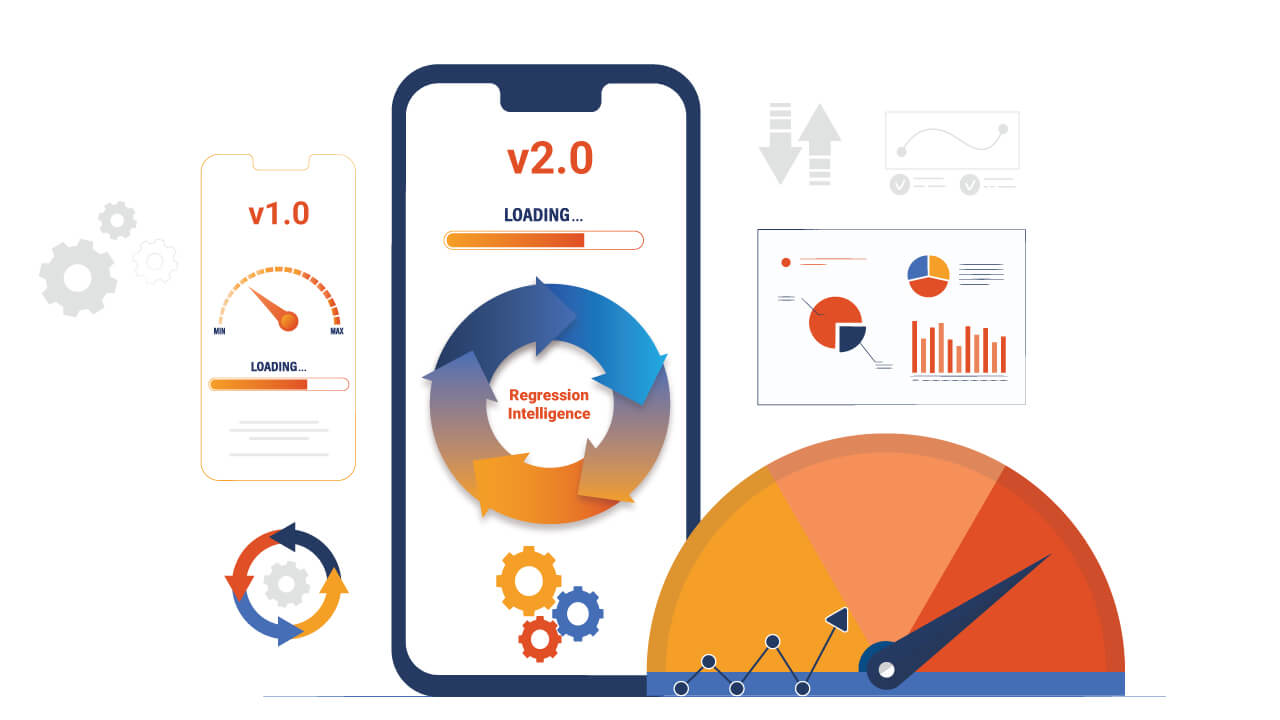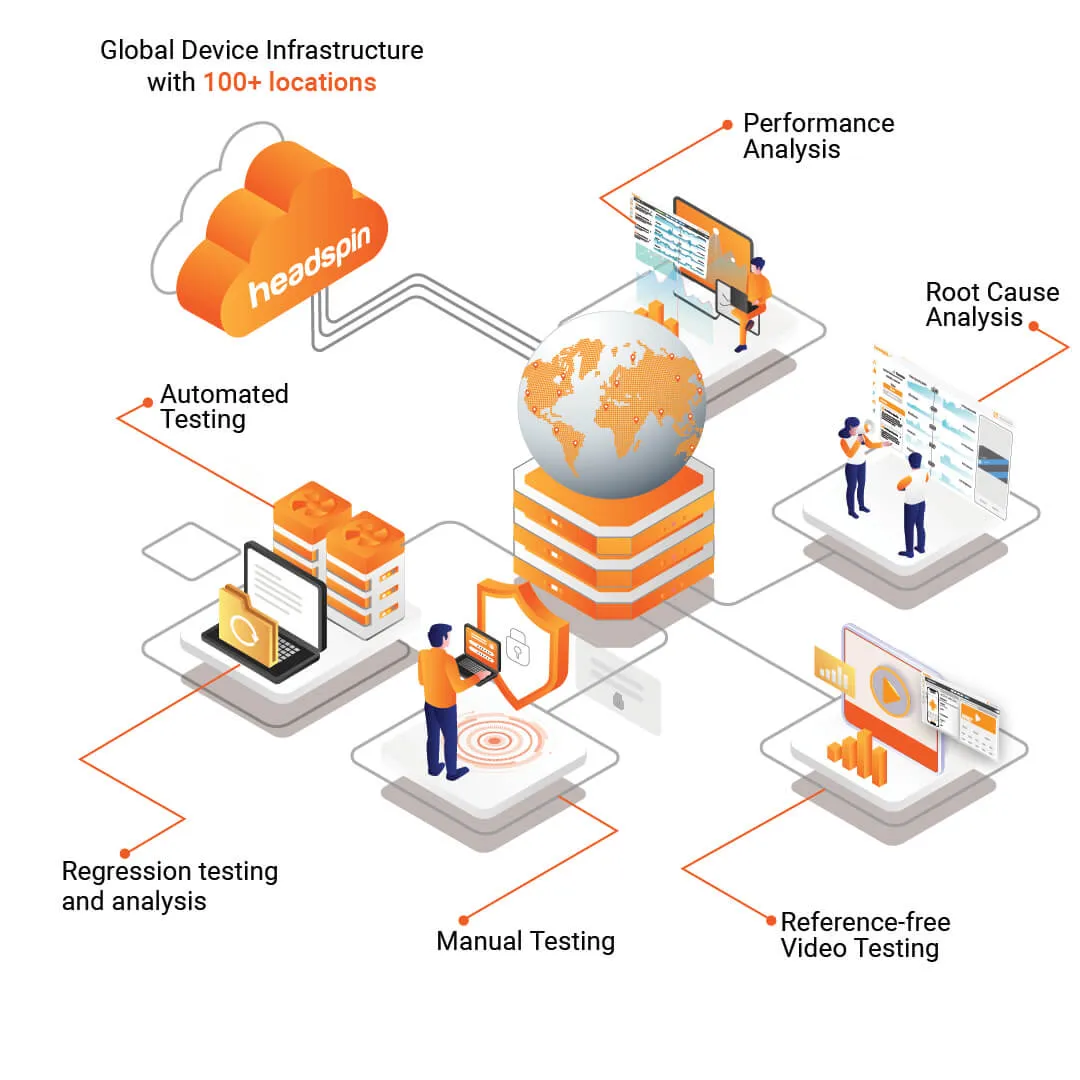A high-end user experience can only be achieved by assessing and verifying the functionality of an application. To identify potential problems with web software, various tools are available, including the Cypress and Playwright testing frameworks. These tools help developers quickly detect bugs, errors, and other issues that can negatively impact usability.
As a result, teams can deliver high-quality, reliable products that offer a consistent user experience. If you aren't sure which end-to-end testing framework to choose for your development projects, this blog will walk you through a detailed comparison of Playwright vs Cypress, helping you decide which one suits your needs best.
What is Playwright?
Playwright is a modern, open-source, end-to-end testing framework developed by Microsoft. It allows developers to write tests that automatically navigate web applications, perform actions, and assert results.
Playwright is primarily written in and supports JavaScript (and, by extension, TypeScript). This means it integrates seamlessly with most modern web development stacks and continuous integration pipelines. This framework provides the ability to run tests across a range of browsers, including Chromium, Firefox, and WebKit. This helps ensure compatibility and consistent behavior across all major web platforms.
Read: A Complete Guide to Web App Testing
What is Cypress?
Cypress is a frontend testing tool built for the modern web. It offers a complete end-to-end testing experience, providing developers and testers with tools to write and execute tests for web applications.
Cypress is built on and supports JavaScript. It has out-of-the-box compatibility with popular JavaScript frameworks and bundlers, making it a favorite among many frontend developers. One of the distinguishing features of Cypress is its real-time, automatic reloading upon code change. This feature enables developers to see test results instantaneously, accelerating the test-debug cycle.
Before diving into how these differ and when you should leverage them, let’s hover over the similarities between Playwright and Cypress.
Also read: Uncovering a Few Popular Android Test Automation Frameworks+
Playwright: Benefits and Limitations
Playwright is a modern end-to-end testing framework built by Microsoft. It’s designed to help teams write reliable browser automation tests across Chromium, Firefox, and WebKit using the same API. While it’s packed with valuable features, like any tool, it comes with trade-offs.
Benefits of using Playwright:
- Supports all major browser engines through a unified API, helping test compatibility with minimal effort.
- Comes with its test runner (@playwright/test), so there’s no need to set up external frameworks.
- Automatically waits for elements before performing actions, reducing flaky tests.
- Offers multi-language support—JavaScript, TypeScript, Python, Java, and NET.
- Simulates device settings, network conditions, permissions, and geolocation for more realistic test coverage.
- Allows parallel execution and works well in CI/CD environments.
- Handles advanced selectors, including shadow DOM and iframes.
Limitations to keep in mind:
- The ecosystem isn’t as large as Cypress’s, so plugins and community support can feel limited at times.
- The configuration may feel heavy for beginners or teams migrating from simpler tools.
- Mobile testing is limited to browsers, and real device testing requires an external setup.
- It lacks a built-in visual dashboard for test debugging, which some teams may find helpful.
- Advanced workflows like custom fixtures or test distribution require more manual setup.
Cypress: Benefits and Limitations
Cypress is a widely used end-to-end testing framework designed specifically for modern web applications. It runs directly in the browser, offering a fast, interactive way to write and debug tests. It's especially popular among frontend developers due to its ease of use and visual debugging tools. Like any framework, it has its strengths and limitations.
Benefits of using Cypress:
- Easy to set up and get started—ideal for teams new to automated testing.
- Provides a visual test runner that shows what’s happening in the browser step by step.
- Automatically reloads tests as you make changes, speeding up development.
- Strong debugging support through browser developer tools and detailed error messages.
- Great for writing tests in JavaScript or TypeScript using a simple, consistent API.
- Comes with built-in assertions and stubbing/mocking capabilities.
- Has an active community and a growing plugin ecosystem.
Limitations to keep in mind:
- Only supports Chromium-based browsers (like Chrome and Edge) in its stable version; Firefox support is still evolving.
- Doesn’t support multiple browser tabs or windows in a single test, which limits some use cases.
- Focuses on web applications—no built-in support for mobile or native app testing.
- Tests run inside the browser, which can introduce some limitations in simulating real-world environments.
- Limited multi-language support—Cypress is built for JavaScript only.
Primary similarities between Playwright and Cypress
Both Playwright and Cypress are emerging as top choices when it comes to end-to-end testing frameworks for web applications. Despite their unique offerings, they share some core similarities that make them stand out in the E2E testing landscape:
1. JavaScript-based: Both frameworks are primarily built around JavaScript. This ensures they align well with modern web development practices and are easily adoptable by today's vast community of JavaScript developers.
2. Real-time feedback: Both tools focus on providing real-time feedback. As tests are executed, developers get immediate insights into their test status, allowing for quick iteration and bug fixing.
3. Browser support: Playwright and Cypress are designed to support multiple modern browsers. This cross-browser compatibility ensures comprehensive test coverage, allowing for a more holistic assessment of web applications.
4. Rich debugging capabilities: Both frameworks offer powerful debugging features. From Playwright's ability to pause execution and inspect the browser's state to Cypress's time-traveling debugger, these tools aim to simplify the often complex debugging process.
5. Interceptor capabilities: Both Playwright and Cypress have features to intercept and modify network requests. This allows testers to mimic various backend responses or conditions, ensuring the frontend behaves correctly under different scenarios.
6. DOM interaction: Handling and interacting with the Document Object Model (DOM) is crucial for E2E tests. Both frameworks excel in this domain, offering intuitive commands and methods to navigate, query, and interact with web page elements.
Playwright vs Cypress — The key differences
Test structure
● Playwright
● Cypress
Interacting with elements
● Playwright
● Cypress
Handling asynchronous code
● Playwright
● Cypress:
Assertions
● Playwright
● Cypress
Selectors
● Playwright
Playwright offers a range of selector engines to match elements. It combines CSS selectors, text selectors, XPath, and others under a single unified API. This gives testers the flexibility to use the most suitable selector type for their needs.
● Cypress
Cypress primarily leverages jQuery-based selectors, which means if you're familiar with jQuery or CSS selectors, you'd feel right at home.
While Cypress doesn't directly support XPath out of the box, there are plugins available that add this functionality. The jQuery-based approach is quite powerful, but those used to working with raw CSS selectors or XPath might find Playwright's approach more flexible.
HeadSpin's integrations with automation frameworks for E2E testing
HeadSpin's AI-driven Platform is designed to provide seamless mobile testing and monitoring experiences. One of the ways it accomplishes this is by offering integration capabilities with several popular automation frameworks for end-to-end (E2E) testing. By doing so, HeadSpin ensures that developers and testers can utilize their preferred tools while benefiting from the global device infrastructure and insights provided by HeadSpin. The Platform seamlessly integrates with frameworks like Appium, Playwright, and many others.
By offering these integrations, HeadSpin ensures that businesses can maintain their existing testing practices while benefiting from the global insights and robust infrastructure that HeadSpin provides. This combination is key to delivering high-quality applications that work flawlessly for users everywhere.
Note: HeadSpin doesn’t yet support Cypress directly.
Playwright vs Cypress — The key differences
In the end-to-end testing landscape, both Cypress and Playwright have cemented their reputations as robust tools, but choosing between them depends largely on your project's specific requirements. Here's a compact guide:
When should you choose Cypress?
- Ease of setup and use: You desire a testing framework that provides a fast and straightforward setup with an intuitive UI, which is especially beneficial for teams new to E2E testing.
- Real-time reloading: You value real-time feedback during test development, with Cypress automatically reloading tests upon file changes.
- Rich ecosystem: You are looking to leverage an ecosystem of plugins and integrations built around Cypress.
When should you choose Playwright?
- Browser coverage: You require testing across multiple browsers, as Playwright supports Chromium, Firefox, and WebKit.
- Mobile emulation: You need mobile device emulation to test different device-specific behaviors.
- Advanced interactions: You're dealing with complex web apps that require sophisticated interactions like file uploads, downloads, video recording, or network throttling.
Additionally, with Cypress, teams cannot test on real phones, which can be a hindrance.
Bottom line
In the rapidly evolving domain of software testing, both Playwright and Cypress have etched their mark as formidable tools for end-to-end testing. Each boasts a unique set of capabilities and strengths catering to a diverse testing requirement range. The optimal choice is not a mere reflection of the tool's capability but an intersection of your project's intricacies, browser preferences, and the granularity desired in your testing strategy. It's imperative to meticulously assess your project's specifications, delve deep into the nuances of each framework, and then make an informed decision that synergizes seamlessly with your overarching objectives.
FAQs
Q1. Is Playwright suitable for testing Single Page Applications (SPAs)?
Ans: Yes, Playwright is designed to handle modern web apps, including SPAs. It waits for elements to be ready before interactions, and its navigation methods wait for the subsequent page to load automatically.
Q2. How does Playwright handle network throttling?
Ans: Playwright provides an API to emulate network conditions, allowing you to test your app under different network scenarios.
Q3. Can I test Shadow DOM elements with these tools?
Ans: Cypress: Historically, Cypress had challenges testing Shadow DOM, but there have been workarounds and plugins to help. Keep an eye on their documentation for updates on native support.
Playwright: Provides native support for Shadow DOM, making it easier to test web components.



























.png)



















-1280X720-Final-2.jpg)






